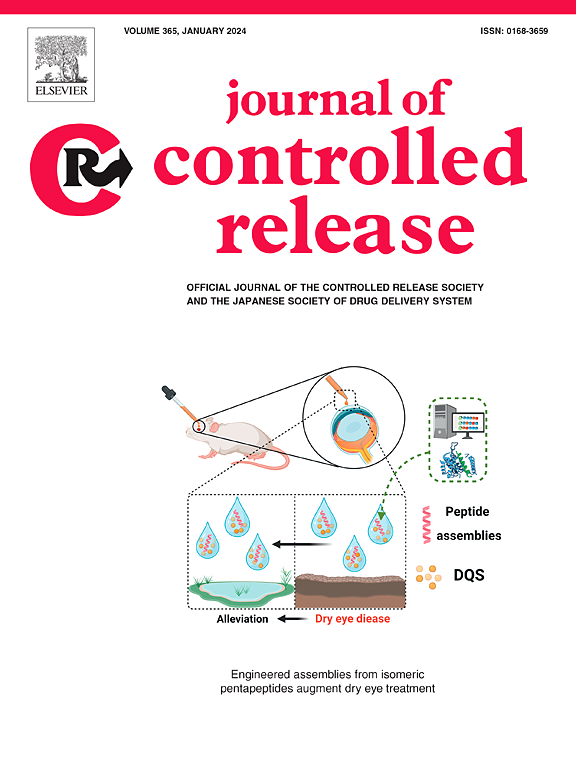Promoting mitocytosis via gene-engineered aligned fibers for fascia regeneration
IF 10.5
1区 医学
Q1 CHEMISTRY, MULTIDISCIPLINARY
引用次数: 0
Abstract
The abnormal accumulation of damaged mitochondria severely impedes tissue repair, and conventional therapeutic approaches, such as drug treatments, are often ineffective to remove damaged mitochondria. In this study, we developed gene-engineered aligned electrospun fibers by integrating microfluidic chip technology with a micro-sol oriented electrospinning technique. This study is the first to demonstrate the repair of damaged fascia by promoting mitocytosis through upregulating tetraspanin-9 (TSPAN9). The key gene for mitochondrial exocytosis, TSPAN9, was initially encapsulated into liposomes using microfluidic chip technology. Subsequently, core-shell structured aligned electrospun fibers were fabricated via oriented micro-sol electrospinning, where TSPAN9-loaded liposomes were protected by hyaluronic acid (HA) in the core layer, while aligned polylactic acid (PLA) fibers formed the outer shell layer. In vitro studies revealed that the aligned fibers closely mimicked the oriented structure of fascia tissue and significantly enhanced cell migration by providing directional physical cues. By sustained release of gene-loaded liposomes into cells, mitochondrial homeostasis was effectively restored, mitochondrial respiration was recovered, reactive oxygen species levels were reduced, and mitochondrial membrane potential was maintained. In vivo studies confirmed that these gene-engineered fibers effectively suppressed inflammatory responses and promoted fascia regeneration by facilitating the removal of damaged mitochondria through mitocytosis. In conclusion, gene-engineered fibers developed in this study, which enhance mitocytosis, offer a novel and promising therapeutic strategy for fascia tissue repair.

求助全文
约1分钟内获得全文
求助全文
来源期刊

Journal of Controlled Release
医学-化学综合
CiteScore
18.50
自引率
5.60%
发文量
700
审稿时长
39 days
期刊介绍:
The Journal of Controlled Release (JCR) proudly serves as the Official Journal of the Controlled Release Society and the Japan Society of Drug Delivery System.
Dedicated to the broad field of delivery science and technology, JCR publishes high-quality research articles covering drug delivery systems and all facets of formulations. This includes the physicochemical and biological properties of drugs, design and characterization of dosage forms, release mechanisms, in vivo testing, and formulation research and development across pharmaceutical, diagnostic, agricultural, environmental, cosmetic, and food industries.
Priority is given to manuscripts that contribute to the fundamental understanding of principles or demonstrate the advantages of novel technologies in terms of safety and efficacy over current clinical standards. JCR strives to be a leading platform for advancements in delivery science and technology.
 求助内容:
求助内容: 应助结果提醒方式:
应助结果提醒方式:


